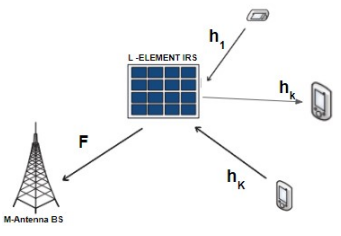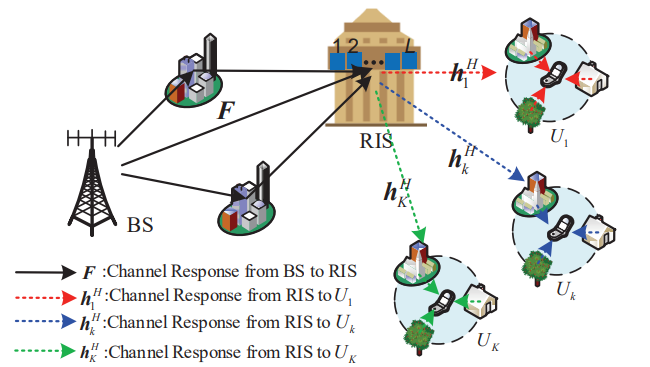Research Areas
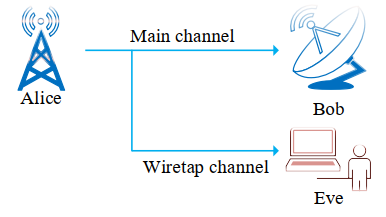
Wireless networks have become pervasive in order to guarantee global digital connectivity. Multiuser multiple-input multiple-output wireless techniques meet this demand by achieving high spectral efficiency. Security is also regarded as critical in wireless multiuser networks because users rely on these networks to transmit sensitive data. Because of the broadcast nature of the physical medium, wireless communication is very susceptible to eavesdropping, and it is essential to protect transmitted information. Wireless communications have traditionally been secured by network layer key-based cryptography. However, in large, dynamic wireless networks, classical cryptography might not be suitable. Classical cryptography tends to cause problems in terms of key distribution and management and computational complexity. Recently, methods have been proposed to provide an additional level of protection and to achieve almost perfect secrecy without encryption keys. These methods, collectively referred to as physical layer security, exploit the randomness inherent in noisy channels. It is considered to be a critical part for public safety, IoT, commercial use cases and beyond. Our research in this area has focused on how confidentiality and integrity can be maintained without decreasing the user’s experience. We investigate on developing physical-layer techniques for security enhancement and analyze performance metrics such as secrecy outage probability, secrecy throughput, and secrecy-reliability tradeoffs
Members: Pradyumna Hegade and Rajalakshmy G
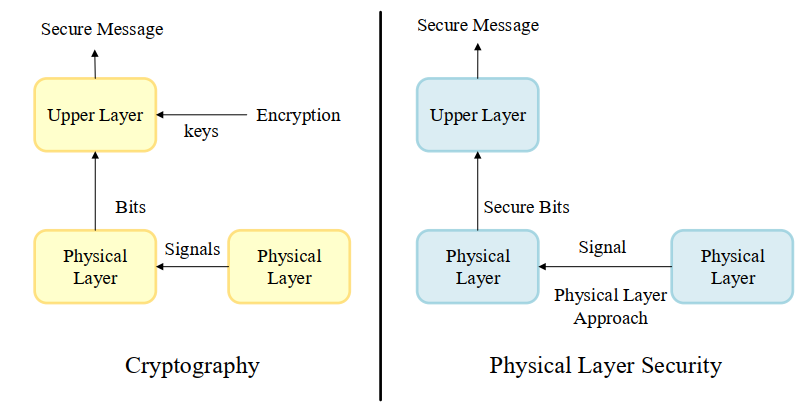
Due to an ever-increasing demand on wireless communications and limited spectrum resources in the sub-6 GHz bands, spectrum sharing is being developed as a key solution to alleviate the spectrum scarcity problem. It has been considered in standards such as 5G NR unlicensed and upcoming IEEE 802.11be. The spectral efficiency and reliability of communications of the underlay secondary users in underlay CR can substantially be improved through the extra degrees of freedom available with multiple antenna systems. However, the performance gain comes at the cost of increased hardware complexity at the radio front end because each antenna element requires an expensive radio frequency chain to process the signal to or from the antenna. Antenna selection can be used to reduce this complexity while retaining much of the benefits of multiple antennas. For these reasons, antenna selection has been incorporated in LTE and IEEE 802.11n, and is also a promising solution to improve the error performance of the interference-constrained underlay spectrum sharing networks.
Members: Prathyusha Appalla and Rajalakshmy G
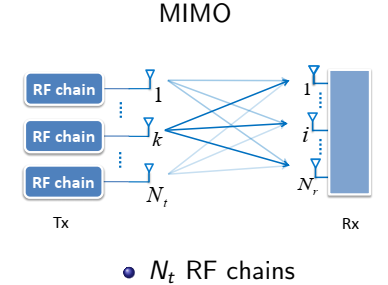
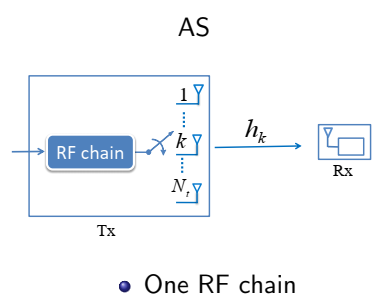
Cooperative relay transmission, which has been considered an enabling technology in the LTE Release 16 and beyond is an attractive, practicable solution to improve the coverage extension and reliability of the wireless networks. In a relay-based cooperative wireless network, one or more relays forward a message from the source to the destination. Ideally, having more relays to forward a message helps improve performance. However, this is practically difficult since tight symbol-level synchronization needs to be ensured at all the separated relays. Selection is a solution that solves this problem. In selection, depending on the current channel realizations, only the best relay, which is the one that has the most favourable channel realization, is selected to forward the message. Selection circumvents the synchronization problem since only the selected node transmits. Yet, despite its simplicity, it achieves the highest diversity order - as was also the case with antenna selection.
Members: Prathyusha Appalla and Rajalakshmy G
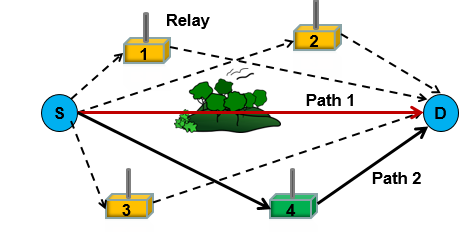
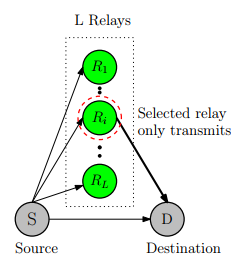
Considering multiple relay-assisted MIMO underlay spectrum-sharing network, we investigate on antenna selection and cooperative relay selection jointly to improve the performance of the secondary network. Our research has mainly focused on developing joint optimal antenna and relay selection policy in order to maximize the SINR or to minimize the symbol error rate (SER) at the secondary destination (D). We employ either maximum-ratio combining (MRC) or selection combining (SC) strategy while receiving, and control the transmit powers of the secondary source (S) and relays to satisfy suitable interference constraint for the primary network. It is through training that the receiver estimates the channel gains of the various antennas and relays, and determines which antenna/relay has to select. The inevitable presence of noise during the estimation process and the time-varying nature of the wireless channel can lead to inaccurate selection and incorrect data decoding, both of which together increase the overall SER and outage probability observed in the secondary system.
Members: Prathyusha Appalla and Aditya Savalia
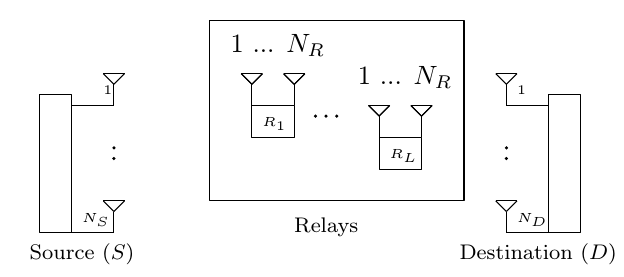
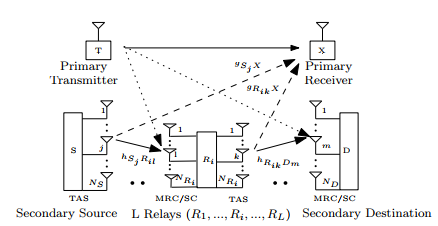
Spectral efficiency and energy efficiency are becoming two essential criteria for designing cost-effective, sustainable, and green 6G wireless networks. The recent advent of intelligent reflecting surfaces (IRS) enables network operators to control the propagation environment itself. It creates line of sight link by smart reflection to bypass obstacle. A new hybrid network with an active base station and passive IRS can enhance signal power at cell edge or hot spot, and boost network capacity without additional energy consumption. We mostly focus on developing optimization algorithms to jointly control the transmit power at the base station and the phase shifts of the reflecting units at the IRS for various scenarios. We further focus on robust channel estimation algorithm design for IRS-aided communication systems. The research outcomes will provide a low cost alternative for energy-inefficient ultra-dense network and massive MIMO, and thus, can also be applied in enhanced Mobile Broadband (eMBB)-plus feature of 6G to provide a high-quality experience in dense population areas, e.g., airport, stadium, and shopping mall.
Members: Sumukha K S and Agrim Agarwal

The fifth-generation (5G) of cellular networks and beyond requires massive connectivity, high data rates, and low latency. Millimeter-wave (mmWave) communications is a key 5G enabling technology to meet these requirements thanks to its technical potentials that can be integrated with other 5G enablers such as ultra-dense networks (UDNs) and massive multiple-input-multiple-output (massive MIMO) systems. Obtaining accurate channel state information (CSI) is essential to ensure the benefits of the mmWave massive MIMO systems. Our research mainly focuses on understanding the state-of-the-art channel estimation techniques in this area. Then, we aim to apply Sparse Bayesian Learning-based methods keeping in mind that the huge number of antennas at the BS will lead to overwhelming feedback overhead.
Members: Agrim Agarwal
